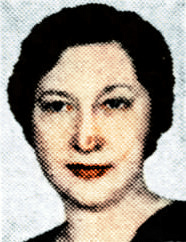The Chicago Daily Tribune (November 7, 1944)

Illinois to cast big vote; GOP strength shows
Expect Green and Lyons to lead Dewey
By Arthur Evans
A total vote in Illinois that may equal and perhaps exceed the 4,262,196 of 1940 is looked for by Republican and Democratic leaders as the campaign goes to the polls today.
Governor Green, running for a second term, will lead the Republican ticket in the vote. County canvasses and straw votes indicate that both the governor and Richard J. Lyons, candidate for U.S. Senator, will lead Governor Dewey, head of the ticket.
The ancient lines of battle are tightened between Chicago, home of the Democratic machine, and downstate Illinois, overwhelmingly Republican.
Downstate estimate raised
Republican statisticians, after a final canvass of county chairmen throughout the state as to the indicated size of the majorities in their counties, raised their estimates of downstate strength. They said their calculations indicate that Dewey will come up to the Cook County lune 350,000 votes ahead of President Roosevelt. Green and Lyins are given a somewhat higher figure in the estimates.
With the country towns od Chicagoland traditionally Republican, the downstate margins will be increased.
Roosevelt is expected to run ahead of Senator Lucas, candidate for reelection. Lucas is opposed by Lyons, his antagonist six years ago. The President is also expected to be ahead of State Attorney Courtney, opponent of Governor Green.
What Roosevelt’s majority in Chicago will be is the problem. It is accentuated this year by the registration and the shifts in population it involves. Republicans said Roosevelt could carry Chicago by 400,000, which they do not deem likely, and still be overthrown by the net combined Republican majorities in the area outside Chicago, which means the 101 counties downstate and the Cook County suburbs.
Registry list grows
Total registration this year is 4,561,410. An increase od 196,033 is Cook County over the 1940 registry lists, largely in war plant areas, now shows the county with 380,350 more registered voters than are on the books in the 101 downstate counties. Cook County has 2,470,880; the remainder of the state, 2,090,530.
Republicans declare the downstate registry will be increased by voters in that area who may vote by affidavit as of old. A large population of the Chicago and Cook County increase results from the fact that people from downstate have moved to war plant jobs, but they have not changed their political views.
Four years ago, Roosevelt had a majority of 281,822 in Chicago, which was a drop from his 1936 majority of 555,286. Straw votes this year give him a smaller percentage of the Chicago vote than the 58.3 percent he had in 1940. Downstate straw votes and county canvasses show Dewey with a percentage notable higher than that of Willkie four years ago, and also with a higher percentage in the Cook County towns.
Soldier vote to be counted
The soldier vote, one of the imponderables in the election, is to be counted with the civilian vote. When the polls close, it is placed in the ballot boxes and the count starts, with the absentee vote supposed to be indistinguishable from the civilian. Theories on both sides are that the soldier vote will not vary much from the civilian.
It was expected to total about 250,000, but reports last night were that it may not exceed 210,000. Fewer ballots were received downstate, it was said, than were at first estimated.
One matter not to be overlooked is the difference in strength this year between the party organizations. In 1940, the Democrats had the state administration. This year, the Republicans have it, while also in a growing majority of the counties, Republicans hold the bulk of the elective offices, and organizations have been built up.
In final forecasts from the rival camps, the Republicans predicted a majority as high as 250,000 for Dewey; the Democrats estimated that President Roosevelt would “materially increase” his plurality of 102,000 out of 4,262,196 votes cast in 1940.

